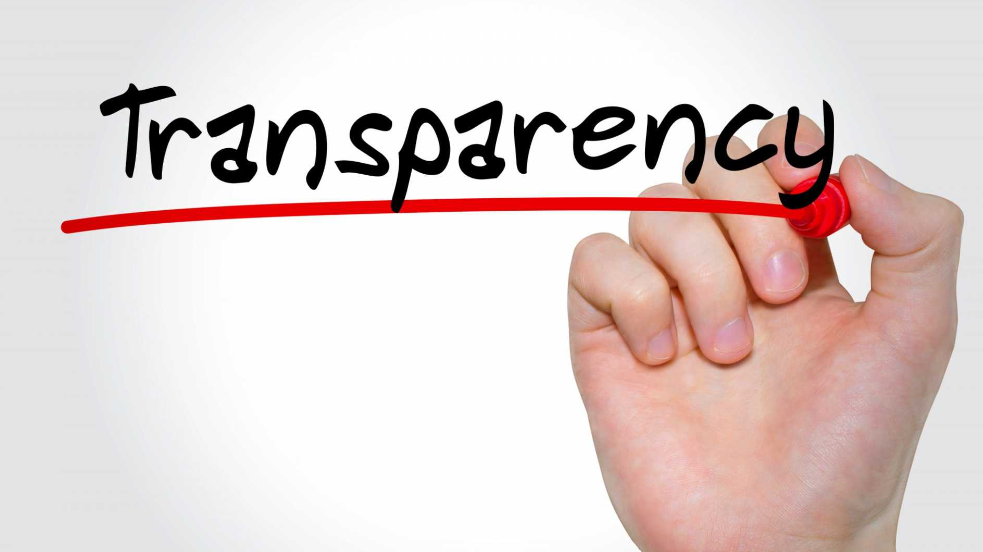Over the past few years, we have become accustomed to an extreme level of transparency in our lives. If you want to go shop for a new TV, for example, there are endless comparison sites online where you can compare everything from feature sets to the ease of set up and delivery costs. You can find out everything you need to know about the product before you buy it. In fact, some people don’t like shopping in stores since they don’t have that information at their fingertips.
Similarly, there is more transparency than ever when it comes to understanding what’s in our food and what we’re putting into our bodies. There’s even increased transparency in the world of medicine, where many of us all but diagnose ourselves online–often to the chagrin of doctors. But with access to all of that information, our conversations with our doctors now occur at a much higher level than they used to happen at.
The age of radical transparency is upon us.
Yet, there is one area which is lagging behind when it comes to this shift: leadership. And the leaders that are ignoring this trend risk being left behind. Let me explain.
Historically, leaders have made their decisions in a very non-transparent manner. It would have been typical, for instance, for a bunch of managers to lock themselves in a smoke filled room as they analyzed and the data and debated an issue. Then, with a puff of smoke emerging as the door opened, the decision would be announced to the rest of the organization.
Those days are gone. Today’s workers, especially Millennials, now expect transparency in the workplace, where they spend a big chunk of their waking hours, to be the same as in their personal lives. Think Amazon, Glassdoor, Angie’s List and millions of pages on any topic you can imagine.
One of the pioneers in this movement is Jack Stack, the CEO of SRC Holdings and the creator of The Great Game of Business. Starting back in 1983, Stack and his leadership team opened up the books of their business to their associates and taught them how their actions impacted the company’s financials. When the employees had access to the data, Stack found that employees were able to engage in intelligent and forward-looking decisions about margins and profits.
Another example of the power of transparency comes from Pepsi-Cola, where they took the bold move of laying out the problems they were having with their distribution channels and product mix shifts to their unionized drivers. But the surprising result was that when they had access to the data, the drivers began having open discussions and coming up with insights that were better than the MBAs in strategy roles could come up with.
If transparency is so powerful, then, why doesn’t everyone embrace it? I’ve found there are two main reasons.
On one hand, many organizations resist this degree of openness because they don’t really trust that people are educated enough to understand things like the financial statements. But that’s just snobbery when you recognize that people make all kinds of educated financial decisions on a daily basis–from applying for mortgages and student loans to paying off their car loan. It’s been my experience that most employees can even calculate in their heads what time-and-a-half overtime will mean after taxes for their paychecks. Todays’ workforce is much more sophisticated than they get credit for. Yes, you might have to supply some extra financial literacy training to help someone better understand the intricacies of the P&L or the balance sheet. And when you do, you can unlock the incredible potential of your people.
The other reason leaders reject transparency is because they believe that holding onto information is power. In a prior article, I talked about how information control is a source of power, especially in a corporate context, because it helps control what kinds of decisions can be made. But this is a mistake because it now betrays your lack of confidence as a leader. The truth is that when you become fully transparent, you become more powerful as a leader. Now this takes some personal confidence, but people will trust and engage with you at an entirely new level. Yes, you may find that people will challenge some of your decisions more often. But what’s wrong with that? Wouldn’t you rather hear someone’s opinion or great idea now rather than when it’s too late? If you think 10 brains are powerful when it comes to making a decision, why wouldn’t you rather have 100 of them all pulling in the same direction.
In some radical cases, there can even be benefits that come from sharing compensation information inside the organization. While there are certainly pluses and minuses with this idea, it does tear down the curtains between perception and reality. And if you can’t defend why someone is paid the way they are, if it doesn’t make sense to the team, then you should be questioning that decision in the first place. The other outcome is that you can create a new level of trust and accountability throughout the organization.
So, if you want to have the ultimate power as a leader these days, open the kimono and start sharing your data and decision-making processes with your people. When you do, you might find that your organization’s performance takes off to a whole new level.



